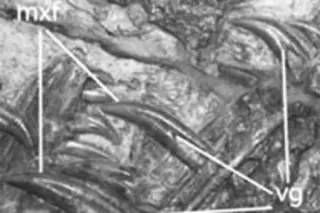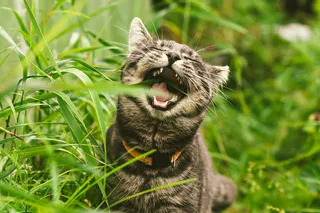It's a dinosaur tooth, and clearly one that belonged to a predator - sharp and backwards-pointing. But this particularly tooth, belonging to a small raptor called Sinornithosaurus, has a special feature that's courting a lot controversy. It has a thin groove running down its length, from the root to the very tip. According to a new paper from Enpu Gong of the Chinese Academy of Sciences, it was a channel for venom. Thanks to a certain film that shall remain nameless, a lot of people probably think that we already know that some dinosaurs are venomous. But the idea that Dilophosaurus was armed with poison, much less spat its toxins at its prey, is non-existent. Some scientists had speculated that they were venomous based on their bizarrely notched and allegedly weak jaws. But these notches have since been found in many other species and no one has ever actually measured the strength of Dilophosaurus's jaws. The best sign that a dinosaur was venomous would be the presence of grooved or hollow teeth. With some notable exceptions, most animals with poison bites use grooves like these to channel their toxins from glands in their mouth to whatever they bite. And grooves are exactly what Gong and his colleagues found in Sinornithosaurus's well-preserved skull. Bryan Fry, who discovered venom glands in Komodo dragons earlier this year, says, "It is an absolutely fantastic piece of work. I actually got goose-bumps reading it! Other studies have suggested dinosaurs may be venomous but this is the most solid piece of evidence." Sinornithosaurus (meaning "Chinese bird-lizard") is a small feathered dromaeosaurid (or, more commonly, 'raptor') and an early distant cousin of the birds. Its teeth are unusually large and Gong says that those in the upper jaw are "so long and fang-like that the animal appears to be saber-toothed". They're very similar to the fangs of back-fanged snakes like boomslangs and vine snakes. Gong says that other aspects of the skull in support of his venom hypothesis. His team noticed that Sinornithosaurus has a small hollow on the side of its jawbone that could have housed a venom gland. They also found a thin groove running along the animal's jaw, with small pits at the top of each tooth. They interpret this canal as a "collecting duct" that channelled venom from the gland to the teeth, and each pit could have acted as small, local venom reservoirs. David Burnham, a co-author on the paper, says, "Other fossil animals (dinosaurs, lizards, mammals) have been suggested to be venomous simply on the presence grooved teeth but out work found multiple lines of evidence."
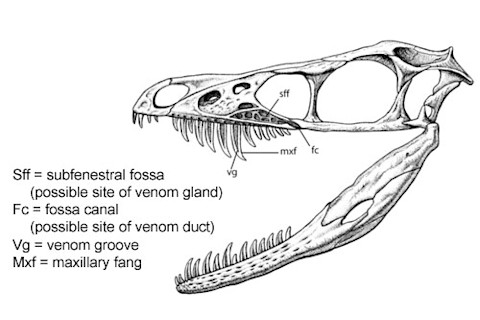
If the team are right about Sinornithosaurus's poisonous bite, there could be implications for the evolutionary origins of venom. "It is interesting that we find this in the lineage directly leading to birds," says Burnham. "It could be that venom really is primitive for archosaurs [the group that includes dinosaurs, birds, pterosaurs and crocodiles] and lizards. Venom could be fundamentally primitive but no one has checked this out." But Gong's take on Sinornithosaurus's skull isn't clear-cut. Fry describes it as "quite incontrovertible", but others disagree. Brian Switek of Laelaps says, "Since venomous dinosaurs are entirely unknown, I think much more evidence is needed. The new paper makes an observation that the dinosaur had teeth similar to those of some venomous reptiles but how can we determine whether those teeth were for delivering venom or for something else?" Thomas Holtz Jr, who specialises in predatory dinosaurs, is also unconvinced. "I find the evidence fairly weak. Not impossible by any means, but weak." Holtz sees Sinornithosaurus's skull in a different light. He views the alleged venom grooves as more pronounced versions of the depressions that line the teeth of most theropods (predatory dinosaurs). The animal's large "fangs" are more likely to be ordinary teeth that have slipped out of their sockets. The same hollow where Gong envisages a venom gland, Holtz sees an extension of an air sac that all theropods have in front of their eyes. The canal where the venom duct supposedly sat may not even be a real structure. That region is damaged in one specimen of Sinornithosaurus and in another, it might just be part of the skull's contours. Philip Currie, who has done a lot of work on feathered dinosaurs, is more positive about Gong's interpretation, saying that the combination of long, grooved teeth and pits on the upper jaw does "suggest the possibility of a poison delivery system, but it may be very difficult to prove unequivocally in the absence of soft anatomy". Currie also notes that scientists have noticed grooves on theropod teeth before. "It has always been assumed that they functioned in much the same manner as grooves on a bayonet, which supposedly break surface tension for easier extraction." But Fry says that grooved teeth are only very rarely found in non-venomous animals. Mandrills, for example, have grooved canines for the reason that Currie described: to make it easier to slip the tooth in and out without creating suction." However the positions of Sinornithosaurus's grooves are important. "Rear-toothed grooving has never been found in non-venomous animals," claims Fry.
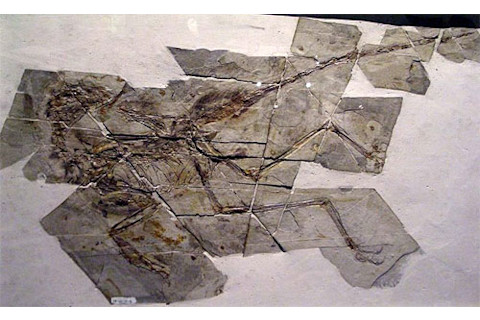
Despite the scepticism, no one has outrightly dismissed the idea of a venomous dinosaur. Fry says, "Venom is an early evolving, key evolutionary event in almost every [living] lineage. It was quite logical that dinosaurs evolved venom one at least one occasion but we have not had the crucial proof." But does Gong's paper provide that proof? "I don't think that they have made their case," says Holtz. However, he acknowledges that if a venomous dinosaur existed, it would probably have been one of the smaller hunters. "A venomous dromaeosaurid is more likely than a venomous tyrannosaurid." Currie hadn't even considered the possibility of venomous theropods before, pointing out that they seem "well adapted to kill without the assistance of venom". But he adds that it was also surprising to learn that Komodo dragons use venom, even though most of their attacks don't need it and their teeth are even more shallowly grooved than those of Sinornithosaurus. "Even though this is a living animal it has taken close to two centuries to learn of their venom." Gong says that the dinosaur's teeth are so long that its bite force would be low (and the narrow snout wouldn't have helped matters either). If the teeth were inserted deeply into flesh, they would probably have become quickly damaged. So sabre-toothed appearance aside, it's unlikely that Sinornithosaurus wielded its fangs as stabbing weapons. Gong thinks that this wasn't a predator that used a simple "grab-and-gulp" strategy; Gong thinks that the unusual maw belonged to a highly specialised hunter. His hypothesis is that Sinornithosaurus was a specialist bird-hunter, using its fangs to puncture through thick layers of feathers. A quick injection of venom might have sent the victim into rapid shock, much like back-fanged snakes and some venomous lizards do today. Sinornithosaurus also had teeth at the very front of its snout that were angled slightly forward, and Gong thinks that the predator could have used these teeth to pluck its victims.
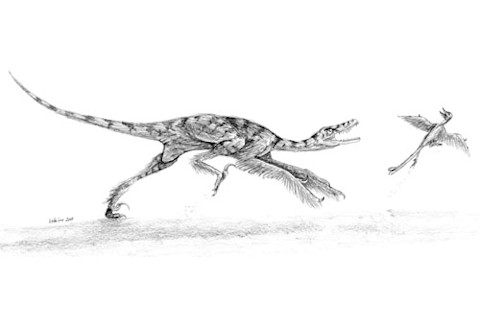
Burnham confirms that this is a guess, but an educated one. "Basically, it's an idea based on what was available as prey items [in the local] forests. I'm sure it would eat lizards or mammals, too. But the long teeth were helpful to penetrate bird plumage." Again, Holtz is sceptical. To him, the simplest explanation for the dinosaur's weak bite is "that it ate small prey", much like the modern secretarybird does. A survey of other species might provide more evidence. Switek says, "If I were in a museum right now, I would be scheduling CT scans of theropod skulls to look for similar traits in other species." That's exactly what the team is doing. Burnham tells me that they are actively searching for the same structures in other small dromaeosaurs, like Microraptor. This debate is not over by a long shot. Reference: PNAS doi:10.1073/pnas.0912360107 Images: Drawing by de Palma More on venom:


